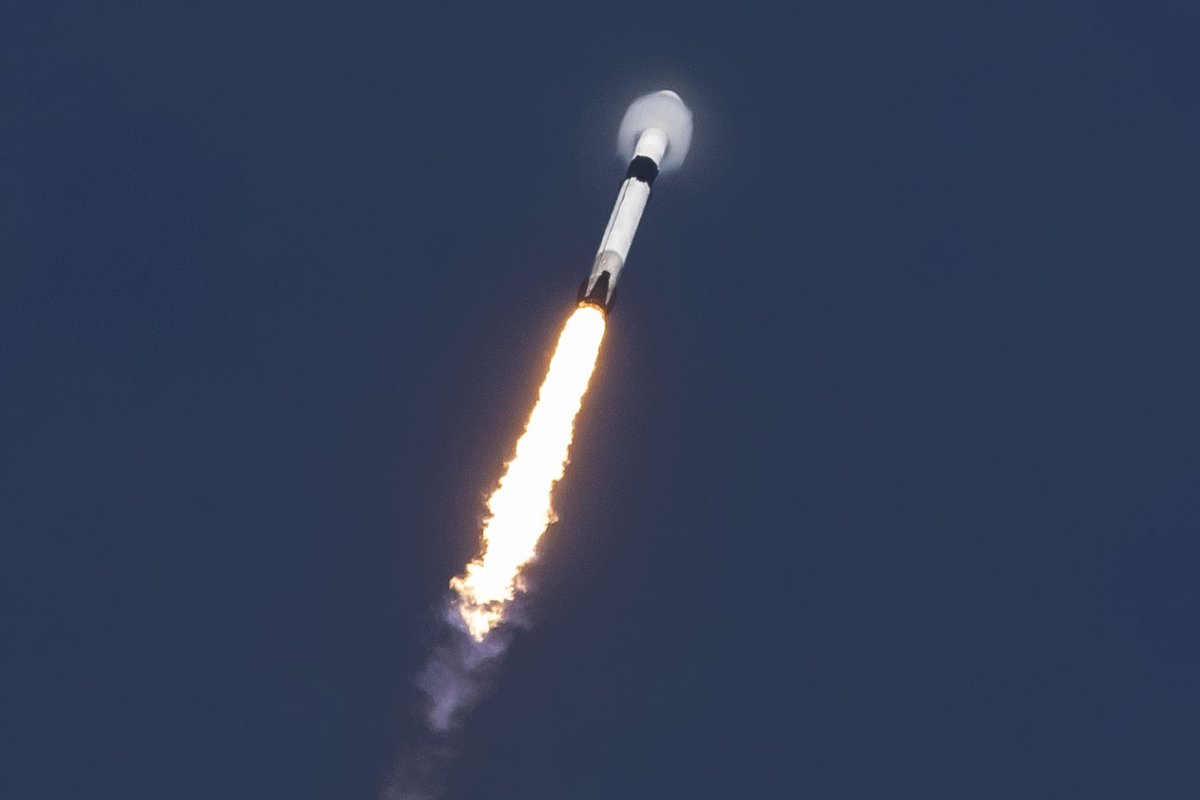SpaceX Aims for Tuesday Launch of Israeli Communications Satellite Amos-17
Liftoff is set for 6:52 p.m. EDT (2252 GMT).

CAPE CANAVERAL, Fla. — SpaceX is now targeting Tuesday (Aug. 6) for its next launch of a Falcon 9 rocket.
The California-based private spaceflight company is aiming to launch the Israeli communications satellite Amos-17 no earlier than Tuesday from Space Launch Complex 40 at Cape Canaveral Air Force Station in Florida. Liftoff is scheduled for sometime between 6:52 p.m. EDT and 8:20 p.m. EDT(2252 to 0020 GMT), pending launch range approval.
SpaceX originally aimed for a launch on Saturday, Aug. 3, but had to reevaluate its plans after a routine preflight static fire test on Thursday (Aug 1) indicated a valve issue on the Falcon 9. SpaceX opted to postpone the launch to replace the suspect valve and perform a second static fire test on the booster.
Related: The Evolution of SpaceX Rockets in Pictures
Static fire test of Falcon 9 complete—team is now working toward August 6 for launch of AMOS-17 from Pad 40 in Florida, pending Range availabilityAugust 4, 2019
Static fire tests are standard pre-launch tests that SpaceX conducts before each mission. During the test, the rocket's first stage is held down and its engines are briefly fired to show that the booster's systems are working as expected prior to launch.
Engineers replaced the suspect valve and conducted a second series of rockets checks late Saturday (Aug. 3). Soon after, SpaceX tweeted that the company was working towards a Tuesday evening launch.
"Static fire test of Falcon 9 complete — team is now working toward August 6 for launch of AMOS-17 from Pad 40 in Florida, pending Range availability," company representatives wrote in a Twitter update.
Breaking space news, the latest updates on rocket launches, skywatching events and more!
SpaceX plans to launch the Amos-17 satellite, an advanced communications satellite owned by Spacecom, an Israeli company, from Space Launch Complex 40 at Florida's Cape Canaveral Air Force Station.
The first stage booster used for this mission, dubbed 1047.3 (an internal identifier by SpaceX) is a veteran member of the Falcon 9 fleet, having flown twice before. First launched in July 2018, it carried the Telstar 19 Vantage satellite, then in November 2018, the booster deposited Qatar's Es'hail 2 communications satellite into orbit.
Once it ferries the Amos-17 satellite to space, B1047.3 will not be recovered. The vehicle needs every drop of its fuel supplies to ensure that the heavy AMOS-17 satellite — weighing in at 6.5 metric tons (14,330 lbs. or 6,500 kilograms,) when fully fueled — reaches the highest possible orbit, so there will not be enough to land itself back at the Cape or out at sea on the company's drone ship.
As such this Falcon 9 has been stripped of its grid fins and landing legs, and is destined to end its service by splashing down in the ocean. However, SpaceX will try to catch another fairing and has deployed its recovery fleet in anticipation of the upcoming launch.
Related: See more photos of SpaceX's Es'Hail-2 satellite launch
The Amos-17 launch will mark the first time a Falcon 9 rocket has flown a payload for Spacecom following the loss of its AMOS-6 satellite on Sept. 1, 2016. (The company was in the process of conducting a pre-launch static fire test when the rocket exploded.) At the time, SpaceX performed its static fire tests with the payload attached to the rocket, a practice the company has since stopped.
But before the mission can get off the ground, SpaceX needs approval from the Air Force's Eastern Range. A Tuesday evening liftoff may be tricky to arrange as right next door to SpaceX's Cape Canaveral launch site, a United Launch Alliance Atlas V rocket is awaiting for its own scheduled liftoff on Thursday (Aug. 8).
The rocket is outfitted with five strap on solid rocket motors, designed to help lift the massive payload on board — the fifth Advanced Extremely High Frequency communications satellite (AEHF-5). Built by Lockheed Martin, the communications satellite will be used by the U.S. military and other government leaders for secure voice, video and data communications.
- In Photos: SpaceX's Amazing CRS-18 Dragon Flight for NASA!
- Watch a SpaceX Rocket Generate 2 Sonic Booms and Land in This Amazing Video
- SpaceX: First Private Flights to Space Station
Follow Amy Thompson on Twitter @astrogingersnap. Follow us on Twitter @Spacedotcom or Facebook.
Join our Space Forums to keep talking space on the latest missions, night sky and more! And if you have a news tip, correction or comment, let us know at: community@space.com.

Amy Thompson is a Florida-based space and science journalist, who joined Space.com as a contributing writer in 2015. She's passionate about all things space and is a huge science and science-fiction geek. Star Wars is her favorite fandom, with that sassy little droid, R2D2 being her favorite. She studied science at the University of Florida, earning a degree in microbiology. Her work has also been published in Newsweek, VICE, Smithsonian, and many more. Now she chases rockets, writing about launches, commercial space, space station science, and everything in between.
